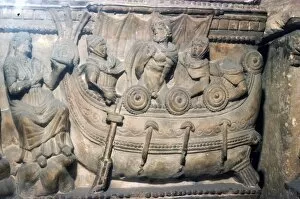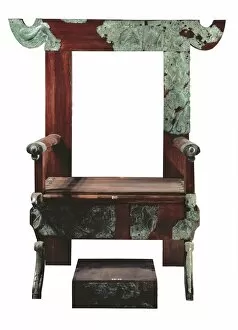Etruria Collection (#5)
"Etruria: A Journey Through Time and Art" Step into the enchanting world of Etruria, a land steeped in history and adorned with magnificent art
All Professionally Made to Order for Quick Shipping
"Etruria: A Journey Through Time and Art" Step into the enchanting world of Etruria, a land steeped in history and adorned with magnificent art. From the 16th-century plan of Florence to the S. S Etruria's voyage from New York to Liverpool in 1890, this captivating caption takes you on a visual tour. Immerse yourself in ancient mythology as Hercules brings Cerberus to Eurystheus, accompanied by Hermes and Athena. The c6th century BC artwork transports you back to an era filled with heroic tales and divine intervention. Marvel at the intricate details of the wall in the Tomb of the Augurs at Tarquinia, Italy. Created by an unknown artist in 1928, it serves as a testament to the artistic prowess of Etruscan civilization. Witness the strength and valor of an Etruscan warrior sculpted during the 4th century BC. This masterpiece showcases their mastery over sculpture and their reverence for martial prowess. Experience elegance personified through a dancer depicted in Tricliniums Tomb. This exquisite piece exemplifies how art was intertwined with everyday life for these ancient people. Gaze upon a cinerary urn on its podium within Chamber tomb of Pruni f; it stands as a poignant reminder of burial customs practiced by these enigmatic people. Discover industrial achievements through Etruria Factories that once thrived within this region. These factories were instrumental in shaping both local economies and cultural landscapes. Embark on a transatlantic journey aboard Cunard ship "Etruria, " witnessing firsthand how travel connected distant lands during its time as a passenger liner between New York and Liverpool. Be captivated by mural paintings found within Leopards Tomb at Tarquinia, Italy - each stroke telling stories lost to time but preserved forever through artistry. Finally, explore another stunning mural painting adorning Tomb with Banquet.
















































